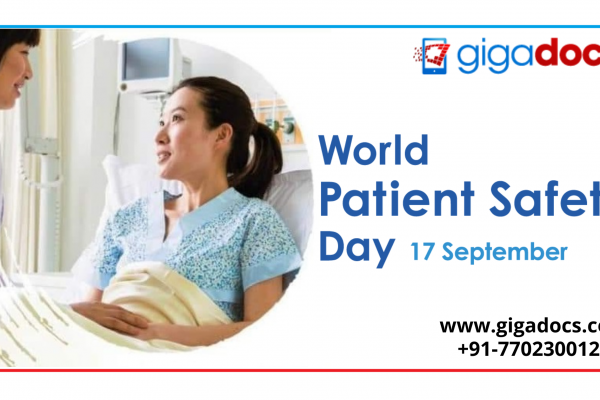Lower Back Pain is one of the main causes of work-related disability.
The importance of taking care of our spine has never been greater than it is now. Our spine supports everything we do. A healthy spine is strong and flexible, allowing us to move freely through daily activities and keep up with the people and activities that matter most to us. However, back pain is quite common and affects millions of people every day. Spinal cord pain can reduce our quality of life by forcing us to miss work and social events and preventing us from performing even routine daily chores.
Work from home has had a deteriorating effect on our spine health. Long sitting hours combined with bad postures add to the woes. October month is celebrated as the National Spine Awareness month. Let’s explore the causes, symptoms, diagnosis, and treatment of spine pain and, more importantly, how we can take care of our spine.
How Covid-19 and WFH Impact Spine Health?
With the Covid-19 pandemic wreaking havoc everything has changed to a virtual form. Most companies have urged their employees to work from the home schedule that requires them to sit for long periods while working on a laptop, which has resulted in a rise in back pain, notably lower back pain, among seniors and the young.
Too much pressure on spinal muscles and discs can lead to health problems. Here are the causes, symptoms of severe back pain.
Severe Back Pain | Causes
- Accidental falls
- Infection and inflammation
- Congenital disabilities
- Severe spine injuries
- Aging-related wear and tear
- Autoimmune diseases
- Vitamin deficiencies
- Limited blood supply
- Overweight or obesity
- A sedentary lifestyle
- Inadequate calcium intake
- Smoking
- Osteoarthritis and rheumatoid arthritis
- Thyroid disease
- Incorrect posture
- Strenuous activities
Symptoms of Spine and Back Injury
- Rounded shoulders or back
- Severe back pain
- Neck discomfort
- Sharp and stabbing, dull and aching, or burning sensation in the back and neck
- Bladder or digestive problems
- Nausea and vomiting
- Discomfort radiating down your arms or legs
- Numbness in the legs and the arms.
Taking Care of Severe Back Pain
- Our body requires a good night’s sleep to restore itself. Don’t sleep on your stomach. The pressure on your spine from sleeping on your stomach is excessive. Sleeping on your side also helps prevent sleep apnea symptoms and gives you a better night’s sleep by reducing upper airway collapse.
- Being overweight or obese, or gaining a considerable amount of weight quickly, are risk factors for low back pain. Excess weight, particularly belly fat, can place additional stress on your lower back muscles, ligaments, and tendons.
- Sitting in one position for lengthy periods is unhealthy, so make sure your spine moves at regular intervals. It is critical to take frequent brief breaks to relieve tension in your spines and mental stress.
- Maintaining soft tissue elasticity and joint fluidity requires staying hydrated. Loss of hydration can cause intervertebral (spinal) discs to dehydrate and lose height. You become more susceptible to painful disc disorders as your spinal discs begin to thin.
- Ergonomics may relieve a lot of stress on both the lower and upper back, which minimizes the incidence of conditions like stiff backs, headaches, and carpal tunnel syndrome, and sciatica. Ensure your workspace is set up for your height whether it’s a laptop, phone, computer desk, or even your car.
- Don’t cradle your phone between your ear and shoulder. To avoid neck pain, keep your phone close to your ear or use a headset. Also, schedule regular breaks to get up and walk around the office or your home. Staying in one position for an extended period causes the back muscles to contract and become immobile.
- To relieve back pain and maintain a healthy spine, go for walks regularly to revitalize and alleviate your pain. Exercise and yoga are also good options for restoring muscle mobility and reducing back discomfort.
| World Spine Day On October 16, World Spine Day is observed globally which emphasizes the importance of spinal health and urges individuals to stay active. We recommend adopting a healthy posture, engaging in physical activity, and lifting responsibly to maintain good spinal health. ‘BACK 2 BACK!’ is the theme for World Spine Day in 2021. |
Diagnosis of Spinal Cord Pain and Back Injury
For an effective diagnosis, doctors will conduct an MRI, CT scan, spine X-ray, and electromyography to detect spinal cord discomfort and back injuries (EMG). Once an orthopedic specialist has identified the specific spinal cord pain, treatment must begin immediately.
Treatment for Severe Back Pain
Several spine problems can limit your mobility and cause unpleasant health problems. You should see a doctor if you are experiencing trouble sitting, walking, bending, or standing. Doctors may even ask to make lifestyle changes such as avoiding heavy lifting, eating a well-balanced diet, avoiding strenuous activity, relaxing, and being hydrated.
We must not overlook symptoms including stiffness, tightness, and neck and back pain. Consult an orthopedic on the Gigadocs app for your persistent lower back pain, upper back pain, or middle back pain. Gigadocs offers you expert orthopedics and the choice to avail of a consultation from the comfort of your home.
Download the Gigadocs App from-
- IOS App – apple.co/2W2iG4V
- Android App – bit.ly/33AQoRC
To know more and schedule a Virtual Consultation demo, e-mail, at info@gigadocs.com



